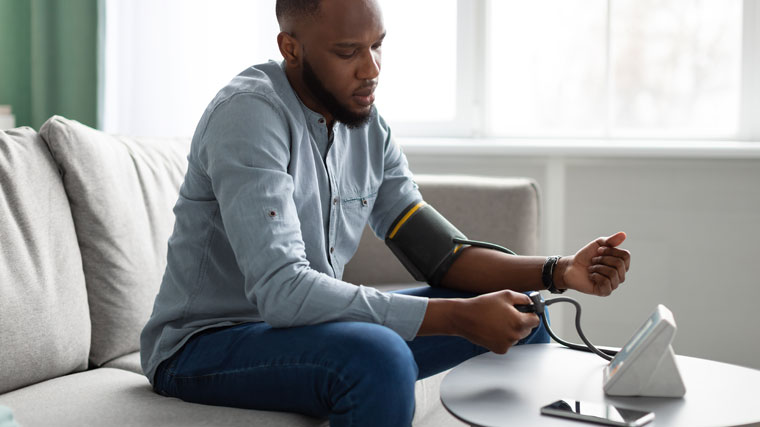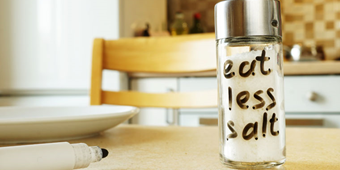- Cardiology And Vascular Health
- Health Topics
- Heart And Vascular Disease Prevention
- Heart Disease Risk Factors
- Primary Care
Home Blood Pressure Monitoring Can Help Control Hypertension

If you are working to manage high blood pressure (HBP), also known as hypertension, self-monitoring might be a good option for you.
Doctors frequently recommend home blood pressure monitoring, when patients:
- Have been diagnosed with hypertension
- Have been diagnosed with pre-hypertension
- Have risk factors for high blood pressure
While regular visits and blood pressure checks by your doctor are still important, checking and recording your blood pressure between visits can give your doctor a more complete picture of your day-to-day blood pressure.
Your blood pressure can vary throughout the day and can change slightly because of emotions, diet, and medications. Because of this, using only in-office blood pressure checks can lead to false readings, especially for patients who feel anxious when visiting the doctor.
HBP self-monitoring is also a good way to help your health care provider have a better idea of whether your treatment plan is working. Having an accurate picture of your blood pressure readings over time can help your physician adjust your medication, as needed.
If your doctor recommends home monitoring, the American Heart Association suggests following these steps to get the best record of your blood pressure:
- Get a cuff that fits. Choose a monitor that comes with the correct size cuff to fit around your upper arm.
- Be prepared. For at least 30 minutes before taking your blood pressure, don’t smoke, drink caffeine or exercise.
- Sit the right way. Choose a seat that keeps your back straight and supported. A dining room chair would be a better option than a sofa, for example. Keep both feet flat on the floor, and rest your arm on a flat surface, like a table. Keep your upper arm at heart level, and place the middle of the cuff directly above your elbow.
- Take multiple readings. For the first few times, check both arms because they will differ slightly. Then, use the arm with the slightly higher reading. Every time you measure, take two or three readings about one minute apart and write down all your readings.
- Stick with a set time of day. Measure at the same time of day. either morning or night, as recommended by your doctor.
- Record your results accurately. Write down all your readings, the date, and the times taken.
- Understand the readings. An ideal blood pressure is less than 120/80 mm Hg. Talk to your doctor about what blood pressure readings should be of concern to you and what to do if you get a concerning reading between appointments.
Self-monitoring of blood pressure is an important part of your HBP care and makes you a valuable part of your health care team.
Source: American Heart Association




